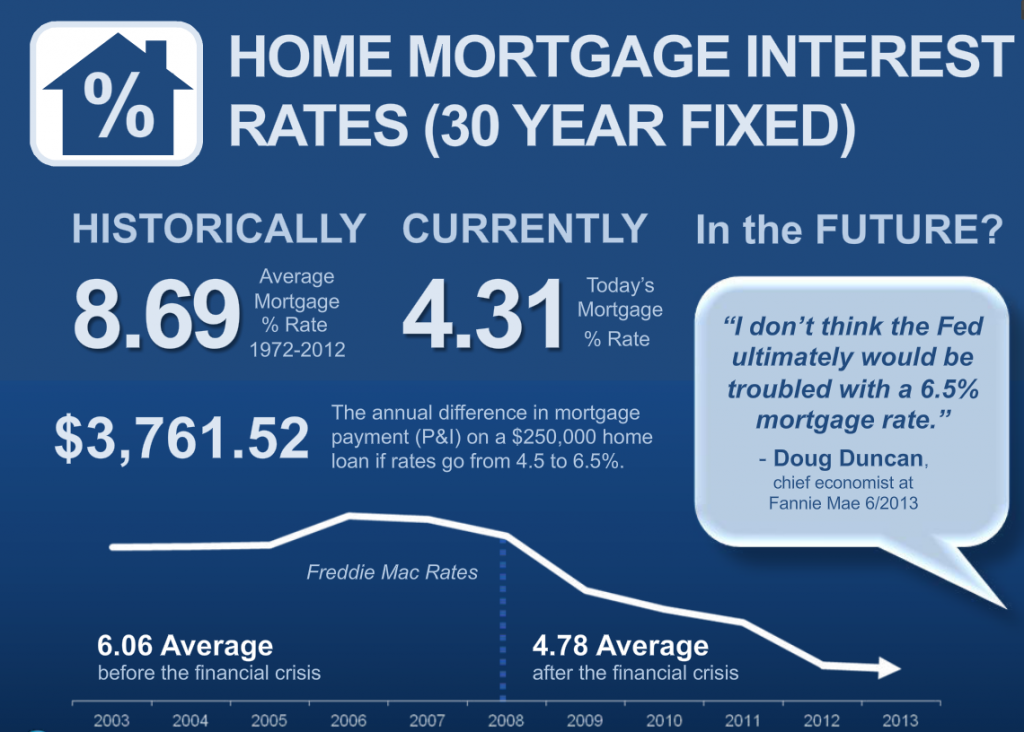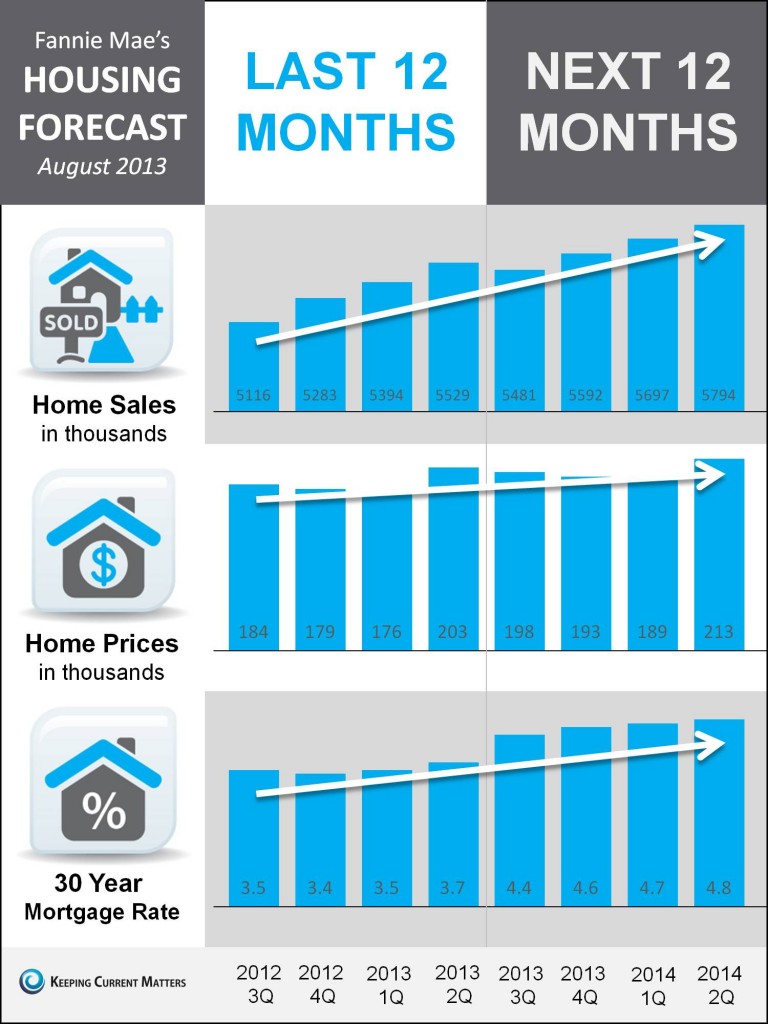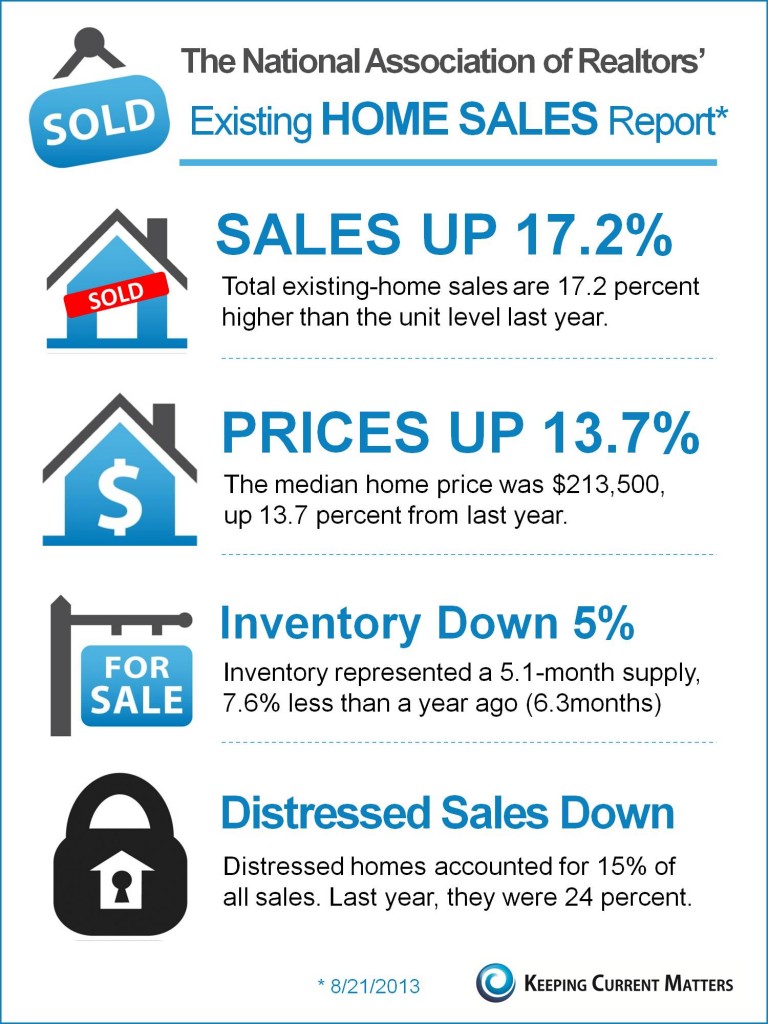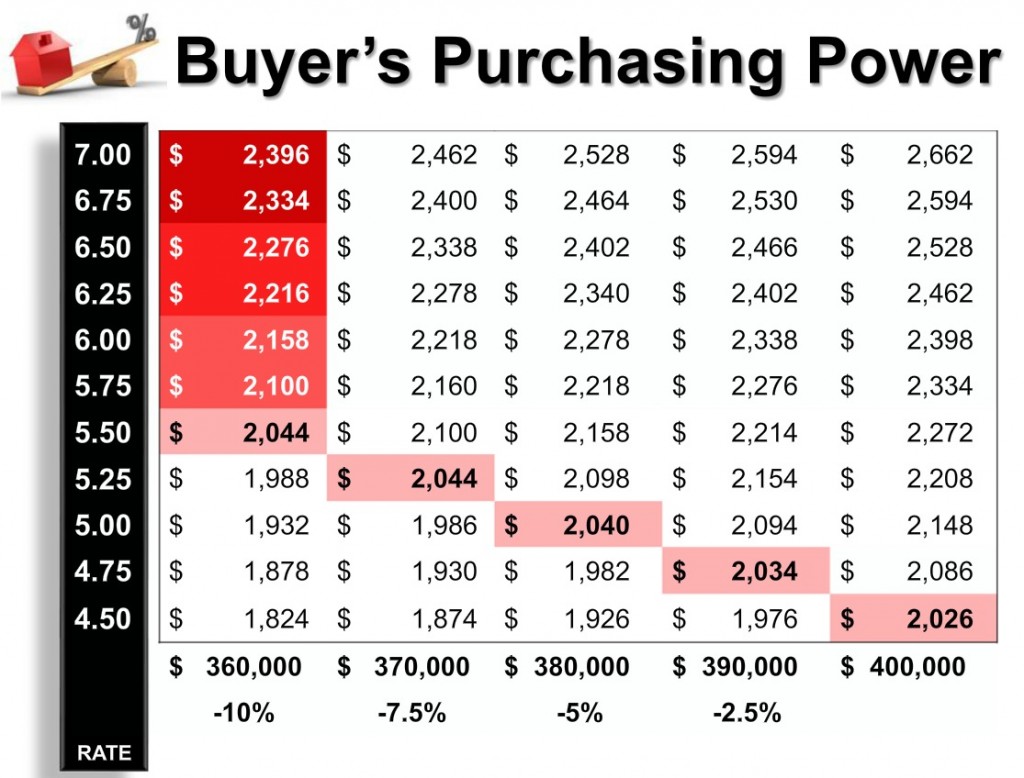US Housing: The State of the American Dream
Real Estate Market Update for September 2013
The latest on what’s happening in our real estate market.
 The latest figures from Northwest MLS show pending sales (mutually accepted offers) during August increased 8.7 percent from a year ago. Brokers in the 21 counties served by the MLS reported 9,065 pending sales system-wide. That’s a drop of 500 units from July, but an increase of 727 transactions compared to a year ago (August 2012). In the four-county Puget Sound region (King, Kitsap, Pierce, and Snohomish), the total of 6,916 pending sales was the highest volume for August since 2006 when members notched 7,692 sales.
The latest figures from Northwest MLS show pending sales (mutually accepted offers) during August increased 8.7 percent from a year ago. Brokers in the 21 counties served by the MLS reported 9,065 pending sales system-wide. That’s a drop of 500 units from July, but an increase of 727 transactions compared to a year ago (August 2012). In the four-county Puget Sound region (King, Kitsap, Pierce, and Snohomish), the total of 6,916 pending sales was the highest volume for August since 2006 when members notched 7,692 sales.
Click for the entire article.
Fannie Mae’s Housing Forecast
In case you are wonder who she is 😉 here’s a link.
Washington No. 4 Among Fastest Growing State Economies
 Washington is outpacing most states on growing its economy, thanks in part to international trade.
Washington is outpacing most states on growing its economy, thanks in part to international trade.
Using figures from the Bureau of Economic Analysis, a researcher at a federal policy organization ranked Washington 4th among states with the fastest-growing economies. North Dakota tops the list, followed by Texas and Oregon.
U.S. gross domestic product (GDP) grew by 2.5 percent in 2012, up from 1.6 percent in 2011. By comparison, Washington’s GDP growth for 2012 was 3.6 percent.
“Washington has made considerable efforts to become a major exporter,” noted Jared Bernstein, a senior fellow at the Center on Budget and Policy Priorities. This has allowed the state to become less dependent on U.S. consumers and companies for business, and to “be nimble enough to take products to where the growth is,” he remarked.
In addition to exports, Washington’s information sector contributed nearly one-third of its GDP growth in 2012, the most of any state. The sector accounted for 9 percent of GDP in 2012, also the most of any state. However, information sector employment has been flat in recent years, with no employment growth recorded in 2012.
Robust grown in Texas and North Dakota was attributed in large part to energy production.
On both federal and state levels, the nonprofit Center on Budget and Policy Priorities conducts research and analysis on budget and tax policies, and works on fiscal policy and public programs that affect low- and moderate-income families and individuals.
Our Changing Housing Market
The housing market has changed a lot over the last 40 years, with the number of home sales, the size of homes, and the cost of homes all changing since the 1970s. Check out this great infographic below to see the ups, and downs, of the housing market over the last 40 years.
 source: MitchellHomesInc.com
source: MitchellHomesInc.com
Household Formation: Pent-Up Demand Is High
 The current rate of household formation in the United States is still well below the expected trend and faulted as a major culprit for “pent-up demand.” According to an analysis by Trulia, an online residential real estate site, potentially 2.4 million households are hitting the pause button. The majority of that number is comprised of young people between the ages of 18 and 34 who have delayed moving out on their own for a variety of reasons.
The current rate of household formation in the United States is still well below the expected trend and faulted as a major culprit for “pent-up demand.” According to an analysis by Trulia, an online residential real estate site, potentially 2.4 million households are hitting the pause button. The majority of that number is comprised of young people between the ages of 18 and 34 who have delayed moving out on their own for a variety of reasons.
An average of 1.1 million new households are formed each year in the United States. But from the first quarter of 2008 to the first quarter of 2011, just 450,000 new households have been added on an annual basis. This sluggish rate means a decrease in the overall demand for housing, which affects the annual construction rate. But this “pent-up demand” driven by young adults who are still living at home or doubling up with roommates is bound to give way, say some housing experts.
Will household formation increase sooner or later? Housing Wire is optimistic, reporting that the conditions are better today for emerging households. Steady job growth over the last several years is a good sign. Sterne Agee analyst Jay McCanless says, “We believe steady, if unremarkable, monthly job growth is creating a…household formation environment for 2013 which should support our positive housing outlook.”
If that projection holds true, increased demand is merely a matter of time. When households come out of hiding looking for single- and multi-family residences or apartments, they could potentially inundate the market.
Amazon Adding 7,000 New Jobs
 The online retailer Amazon is expanding its labor force around the nation by adding 5,000 new jobs in its U.S. distribution warehouses. The company also plans to hire 2,000 customer service employees in several locations, including Kennewick, Wash., reports The Seattle Times.
The online retailer Amazon is expanding its labor force around the nation by adding 5,000 new jobs in its U.S. distribution warehouses. The company also plans to hire 2,000 customer service employees in several locations, including Kennewick, Wash., reports The Seattle Times.
Amazon believes that its efforts to continue developing a system of distribution centers and expanding the grocery service, AmazonFresh, will pay off in the long run. Tom Szuktak, chief financial officer, said to reporters last week, “We are investing for the large opportunity we have in front of us.”
According to Curt Woodward at Xconomy.com, Amazon could be on its way to employing a substantial number of workers in the Seattle area, to the tune of about 20,000, getting closer to the University of Washington’s 25,000-member labor force. Seattle developer Matt Griffin credits Amazon with “bringing in a lot more intellectual capital to the Northwest.” Microsoft also employs a huge labor force in the region, but these employees are spread throughout the Bellevue-Redmond-Seattle areas. In contrast, Amazon’s dense concentration of workers in downtown Seattle affects the city’s urban planning and housing for sure.
Is It Time To Buy? If Interest Rates Matter To You, It Is
The question on so many home buyer’s minds is, “is it time to buy?” In some circumstances it is. For those requiring a mortgage, the rates available today would indicate it’s time.
 Those rates impact buying power. Here’s a simple chart demonstrating what interest rates increasing does to buying power.
Those rates impact buying power. Here’s a simple chart demonstrating what interest rates increasing does to buying power.
As a seller, this is why it is important to price at market value. The longer you stay on market, the buyer pool of your home may shrink due to these rates.



